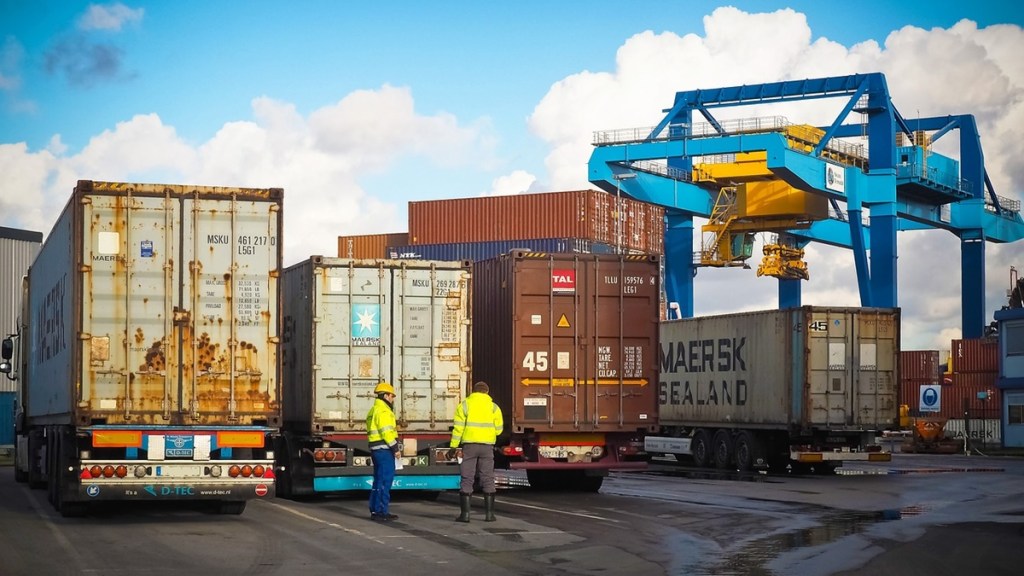By Lohit Bhatia
In today’s globalised and interconnected society, consumers’ desire for goods that are both affordable and quickly available at a moment’s notice. Here, logistics play an integral role in international trade and domestic commerce. If a country’s logistics are not strong, there are chances that the supply chain and trade performance will not be up to the mark. In 2018, India was ranked 44th in the World Bank Logistics Performance Index, a metric used to rank nations according to their logistics performance.
In India, the logistics industry has always been highly disorganised and fragmented, mainly due to the presence of multiple stakeholders. Besides this, the country’s logistics costs are 4–5% higher than in developed economies due to erratic supply chains and inadequate first- and last-mile connectivity.
Also Read: Markets to remain volatile in near-term; use opportunities to build positions in cos with growth potential
Manufacturing and infrastructure sector will become a powerhouse of employment
India unveiled the National Logistics Policy (NLP) in mid-September to bring all the digital services related to the transportation sector into a single portal. The policy would significantly impact the manufacturing and infrastructure sectors, potentially making India the next global manufacturing hub. In addition, it is an attempt to lower the country’s logistical costs, an area where human resources will play a crucial role. When combined with existing plans like the PM GatiShakti National Master Plan for Multi-Modal Connectivity, the new policy will make it easier for India to create new jobs, move up in the world rankings, and become a logistics powerhouse.
Besides this, the Production Linked Incentive (PLI) scheme, implemented in February 2021 to boost manufacturing’s contribution to GDP, would also lead to job creation. It’s noteworthy that the logistics sector currently employs more than 22 million people in India and is expected to add another 1.2 million jobs by 2025. The other important factor contributing to Indian manufacturing growth is infrastructural development. Infra has a multiplier effect on the economy, fuelling faster job creation in the cement, steel, and machinery subsectors of the construction industry. India’s future infrastructural projects of inter-and intra-city traffic corridors, ports, and green expressways will also ensure faster movement of goods, less wastage, and lower transportation costs.
This will create higher competitiveness in the export industry across domestic and international markets. The planned reduction in logistics costs from 13-14% to 8-9%, with approximately 5% support from the PLI scheme, will benefit the country’s overall supply chain management by 10%. This could become a game changer for India on the international stage, allowing our exports to double to match the global supply chain standards. Also, in the long run, this would equip national and state governments to stay on par with the state-of-the-art technology in logistics segments.
How NLP will propel “Total Employment Solution” for India
Most entry-level workers in India are hired by the infrastructure and construction industries. This is especially true of those from rural areas who have left farming. Providing them access to a skilling ecosystem can further boost their productivity, earnings potential, return on investment (ROI), and project turnaround time.
The NLP policy would accelerate hiring and create new job roles in transport, supply chain management, digital warehousing and other fields. It would enable transport, infrastructure and manufacturing companies to recover from challenges faced during the pandemic, enabling greater development and growth in the Indian market. At this stage, companies should focus on implementing the best possible labour practices, such as providing workers and their families with health, transport, and education benefits in labour camps. Companies should also utilize their CSR funds more strategically towards solving issues like unemployment in socially deprived societies.
Also Read: Petrol, Diesel Price Today, 29 Oct 2022: Fuel prices unchanged; Check rates in Mumbai, Delhi, other cities
As supply chain and logistics ecosystems progress for the better, we inch closer to the global benchmarks in creating a “Total Employment Solution” for the country. The NLP has set the roadmap for the country’s economic progress and is in line with the country’s vision of a true “Atmanirbhar Bharat.”
(Lohit Bhatia is the President- Workforce Management of Quess Corp. The views expressed in the article are of the author and do not reflect the official position or policy of FinancialExpress.com.)

